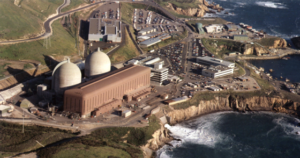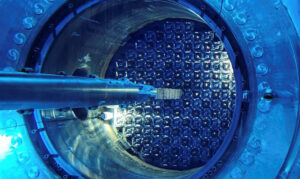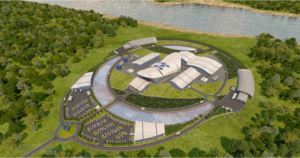2022 was an eventful year that set a tone within the nuclear energy sector.
The push for new clean energy sources is impacting the world, an example of which is the United States. From the signing of the Inflation Reduction Act (IRA) to fueling the nation’s next new reactor, the year saw several events that contributed to nuclear energy.
Eleven factors contributing to nuclear power set the stage for another fruitful year in 2023.
1. Landmark climate legislation
The Inflation Reduction Act, signed into law by President Joe Biden, became the most crucial climate legislation in the country. THE IRA includes multiple tax incentives for the nuclear industry. One of the essential incentives is the $15 tax credit per megawatt-hour of production. This credit will keep the existing fleet competitive with other power generators.
Seven hundred million was allocated to build a domestic supply chain for high-assay low-enriched uranium (HALEU). And $150 million to improve nuclear research and development infrastructure at the Idaho National Laboratory (INL).
2. Diablo Canyon power plant extends operation
The U.S. Department of Energy, through the Civil Nuclear Credits (CNC) Program, awarded Pacific Gas and Electric Company a conditional grant of $1.1 billion in credits. This grant intends to help prolong the operation of Diablo Canyon. California’s only operating plant was scheduled to be decommissioned by 2024 and 2025. And thanks to the release of these credits and recent state legislation, this vital energy source is on track to continue providing carbon-free electricity for five more years.


3. Fuel loading at the Vogtle plant


Fuel loading into the Unit 3 reactor core at the Vogtle (Georgia) power plant was completed. They scheduled Unit 3 to commission in the first quarter of 2023 and Unit 4 next year. Once operational, the two units will become the largest single clean energy generator in the U.S.
4. SMR Deployment
NuScale Power’s SMR certification will have a final rule published by the U.S. Nuclear Regulatory Commission (NRC). Once published, companies will soon be able to begin referencing the SMR design in their combined license applications. 

Over the summer, the Tennessee Valley Authority announced an agreement with GE-Hitachi to support preliminary planning and to license the potential installation of a BWRX-300 SMR at the Clinch River site.
5. Transitions from coal to nuclear power


In September, the U.S. Department of Energy published a study. This report explains that 80% of the country’s coal plants evaluated could convert to nuclear power. This transition from coal to nuclear power could increase U.S. nuclear capacity to more than 250 gigawatts. Nuclear power plant projects could also benefit from retaining the existing workforce, as many possess the skills and knowledge needed to transition to the nuclear power workforce.
6. Fuel for future reactors
TRISO-X X-energy’s fabrication plant will be the nation’s first commercial-scale facility dedicated to fueling HALEU-based reactors. TerraPower and G.E.’s Global Nuclear Fuel began constructing a


fast reactor fuel plant in Wilmington, supporting the Natrium reactor demonstration.
DOE also awarded $150 million to Centers Operating Corporation to demonstrate the nation’s ability to produce HALEU using an enrichment cascade at Piketon, OH.
7. National Laboratory Progress
Idaho National Laboratory built a full-scale prototype to support DOE’s (MARVEL) project. The prototype will help validate the final design of the project’s microreactor, which could be operational within two years. The researchers also performed their first digital twin test for a simulated microreactor in the laboratory. This will help advance remote monitoring, autonomous control, and predictive capabilities to reduce the operating costs of microreactor technologies and improve their safety.
8. World’s Largest Salt Chloride System Built
Southern Company Services and TerraPower built and installed a new test facility in Washington. The Integrated Effects Test (IET) is the world’s most extensive chloride salt system for nuclear energy sector and will be used to develop the team’s molten chloride fast reactor technology. Through DOE’s Advanced Reactor Demonstration Program fund, the MCRE.
9. Argonne adds the new testing capability


Argonne National Laboratory added a new capability to support the testing of liquid metal fast reactor components. They installed the Thermal Hydraulic Experimental Test Article (THETA) at the laboratory’s METL to provide high-resolution, high-quality data that investigators can use to develop computer code to support licensing of liquid metal fast reactor designs.
10. International developments
Two major international agreements occurred during the IAEA ministerial meeting on nuclear energy, organized by the DOE in Washington, D.C.
The first was the announcement of a strategic partnership between Poland and the United States to launch the European country’s civil nuclear program.
The second is a tripartite announcement between the United States, France, and Canada to increase Romania’s nuclear energy sector capacity, thus helping to boost clean energy production and energy security throughout the region.
11. DOE increases its support for university research in nuclear energy


The final factor is DOE’s establishment of a new Distinguished Early Career Program to enable top nuclear energy faculty to conduct innovative research in support of the missions of the Office of Nuclear Energy. Five junior faculty received funding in 2022 to support research projects.
It can be of your interest:North American electric vehicle battery manufacturing capacity to increase by 2030


